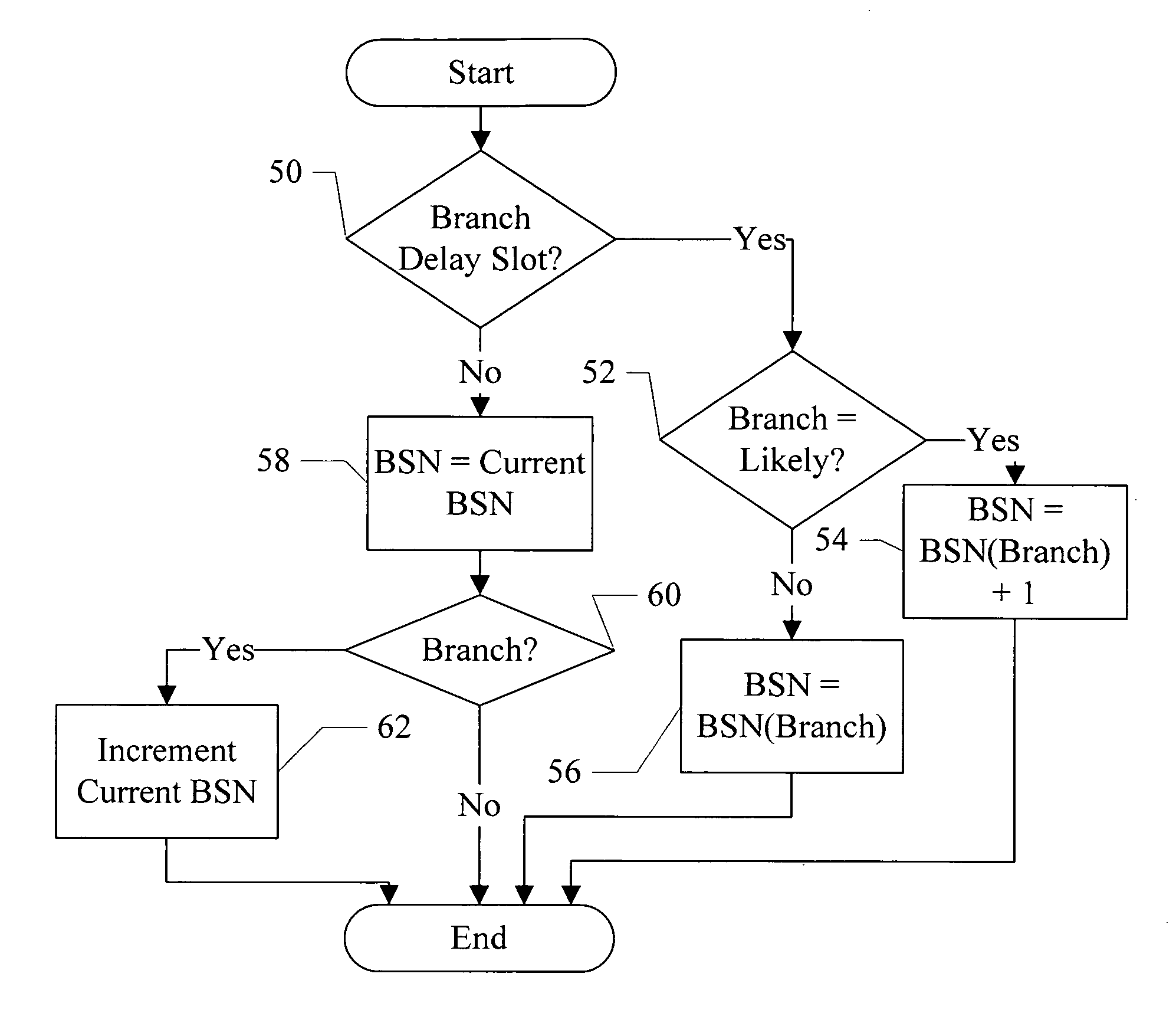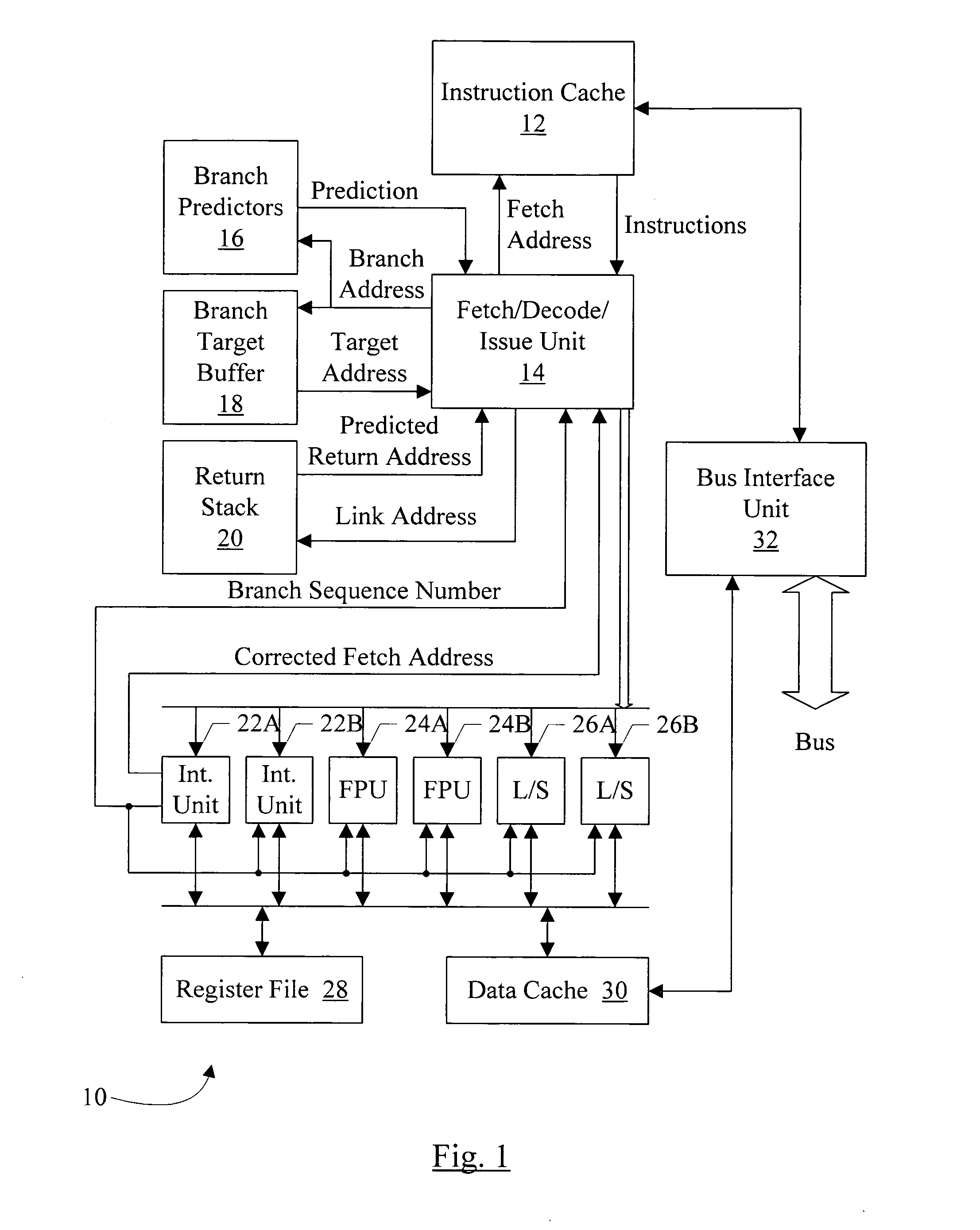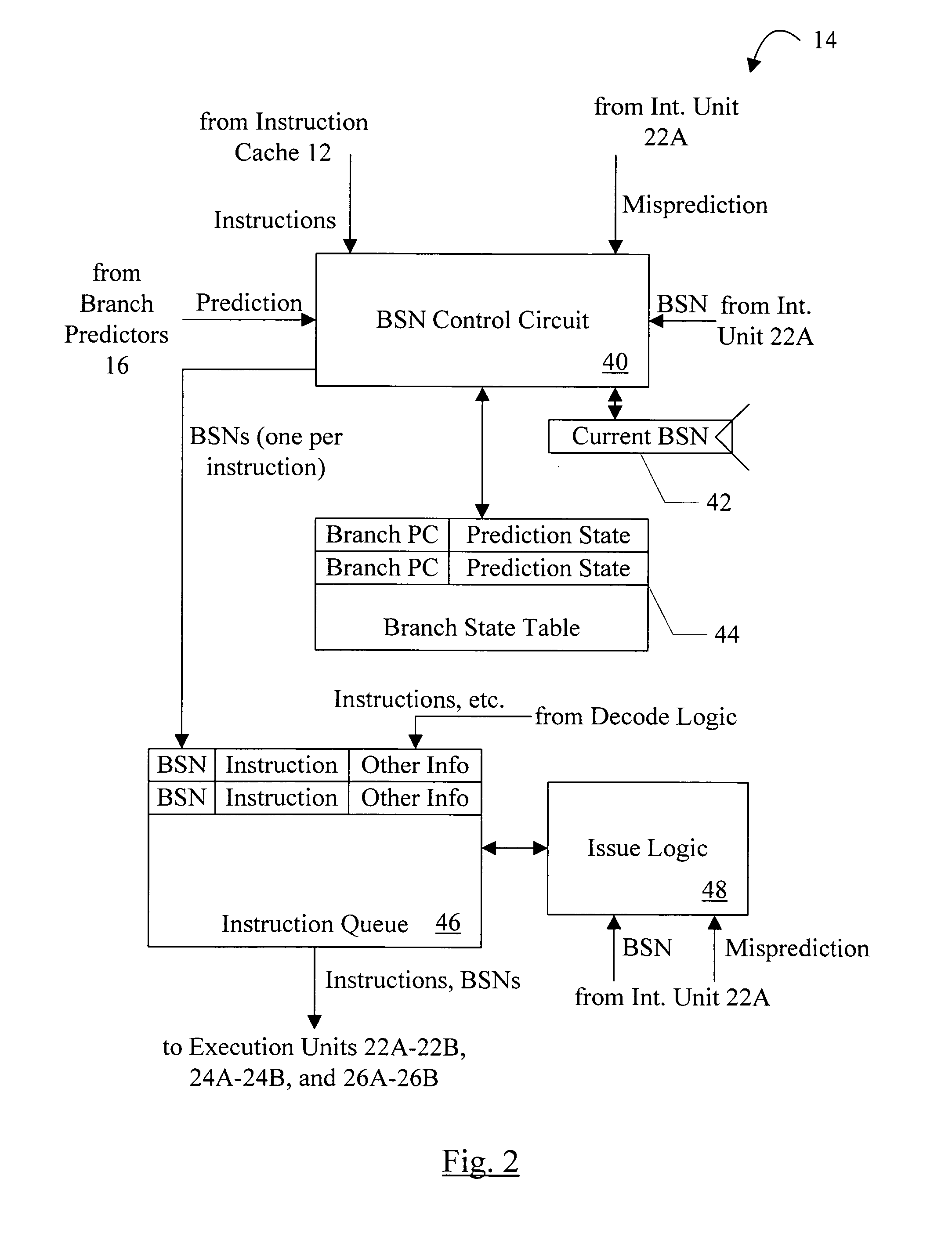Method for identifying basic blocks with conditional delay slot instructions
a conditional delay and instruction technology, applied in the field of processing, can solve the problems of complex canceling of speculative instructions, affecting the design of processors, and presenting numerous challenges to processor designers
- Summary
- Abstract
- Description
- Claims
- Application Information
AI Technical Summary
Benefits of technology
Problems solved by technology
Method used
Image
Examples
Embodiment Construction
[0023] Processor Overview
[0024] Turning now to FIG. 1, a block diagram of one embodiment of a processor 10 is shown. Other embodiments are possible and contemplated. In the embodiment of FIG. 1, the processor 10 includes an instruction cache 12, a fetch / decode / issue unit 14, a branch predictors unit 16, a branch target buffer 18, a return stack 20, a set of integer execution units 22A-22B, a set of floating point execution units 24A-24B, a set of load / store execution units 26A-26B, a register file 28, a data cache 30, and a bus interface unit 32. The instruction cache 12 is coupled to the bus interface unit 32, and is coupled to receive a fetch address from, and provide corresponding instructions to, the fetch / decode / issue unit 14. The fetch / decode / issue unit 14 is further coupled to the branch predictors 16, the branch target buffer 18, the return stack 20, and the execution units 22A-22B, 24A-24B, and 26A-26B. Specifically, the fetch / decode / issue unit 14 is coupled to provide a b...
PUM
 Login to View More
Login to View More Abstract
Description
Claims
Application Information
 Login to View More
Login to View More - R&D
- Intellectual Property
- Life Sciences
- Materials
- Tech Scout
- Unparalleled Data Quality
- Higher Quality Content
- 60% Fewer Hallucinations
Browse by: Latest US Patents, China's latest patents, Technical Efficacy Thesaurus, Application Domain, Technology Topic, Popular Technical Reports.
© 2025 PatSnap. All rights reserved.Legal|Privacy policy|Modern Slavery Act Transparency Statement|Sitemap|About US| Contact US: help@patsnap.com



